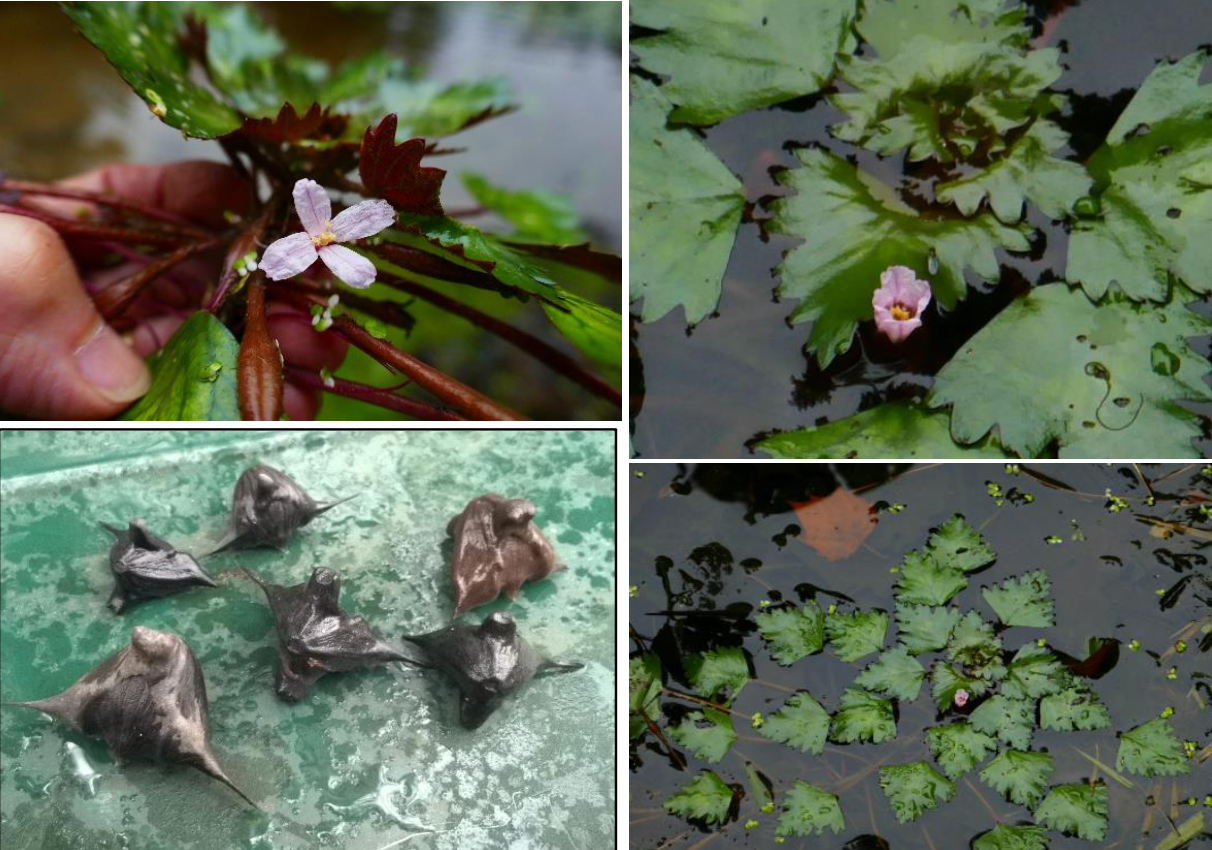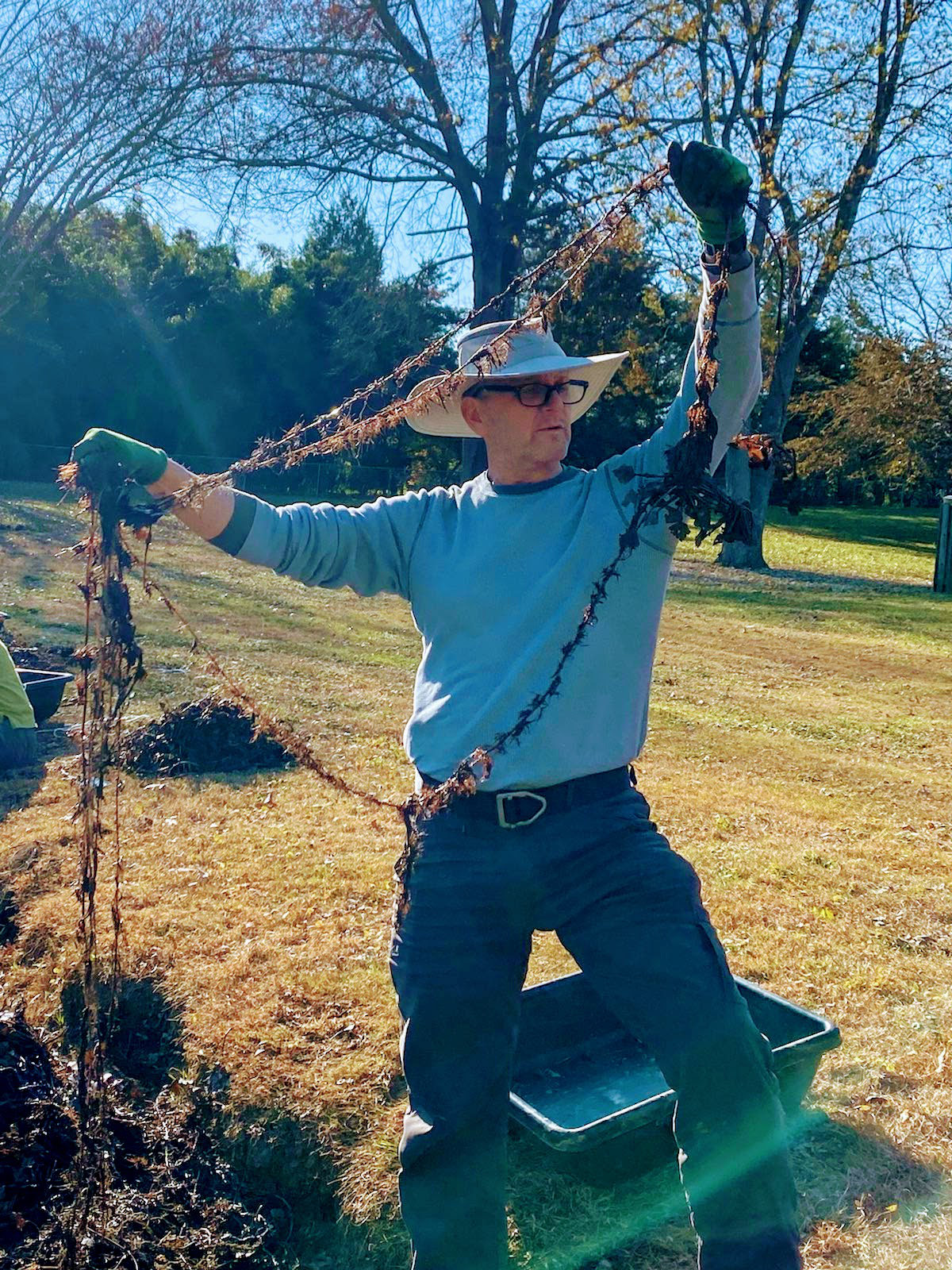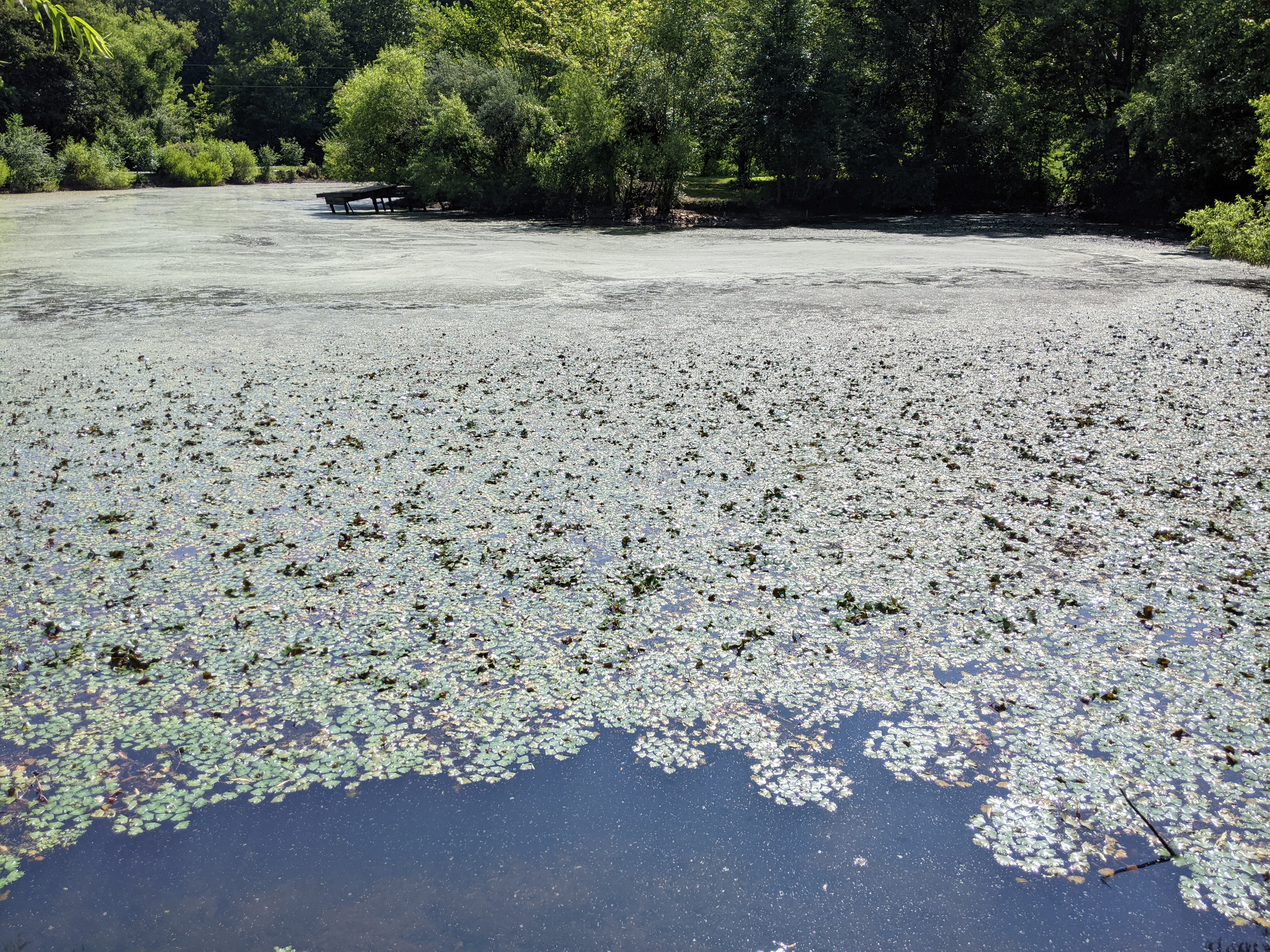
New Aquatic Plant Invading Freshwater Habitats in Northern Virginia
This post is by AG Sweany, DCR Invasive Species Technician
This spring and summer, keep an eye on your local ponds and lakes for a new floating invasive plant: “two-horned trapa” (Trapa bispinosa). This plant grows quickly and can cover the entire surface of freshwater ponds and slow-moving streams. Not only is it an eyesore, but it also shades out native submerged aquatic vegetation, and has the potential to impede boating, fishing, recreational and commercial use of waters. It produces large seed-pods with two sharp spines that can pierce skin and harm unaware anglers, recreationists or pets. The spines of the seed-pods can attach to waterfowl and be carried away, facilitating its spread into neighboring waters.
Conservation managers are concerned that this species will spread into the Potomac River and grow unchecked. European water chestnut (Trapa natans), a relative of two-horned trapa, covered nearly 10,000 acres of the Potomac River in the 1940’s. The huge floating mats of water chestnut out-competed native bay grasses, and required a multimillion dollar removal effort by the US Army Corps of Engineers. Similar problems and costs are possible with two-horned trapa.

The current goal is to control two-horned trapa populations while they are still relatively small, removing plants before they go to seed every year to reduce the chances of spread. Two-horned trapa is believed to be an annual species, so if all plants are removed each year, the seed bank can be reduced and eventually depleted. As of Fall 2021, this species is only found in Northern Virginia (outside of its native range of East Asia.) It has taken root in ponds, reservoirs and lakes in Fairfax, Fauquier, Prince William and Loudoun Counties. Conservation leaders and parks staff are hoping to discover more about how to manage this plant, and track and slow its spread.

How YOU can help:
Please report this species anywhere you find it, including:
Location
Pictures of the plant(s), especially flowers and the underside of the leaves
Other details: the date, if you see flowers or seed pods, how much of the waterbody is covered by these plants
Use eddmaps.org or the eDDMapS mobile app (apple, google) to report your sighting, or the reporting form on this DCR webpage.
Learn more
Get the DCR fact sheet on two-horned trapa here >>
See the Fairfax County Trapa bispinosa webpage >>
Find a map of currently verified populations here >>
References
New York Invasive Species Information. Water Chestnut. (2019, September). Retrieved March 17, 2022, from http://nyis.info/invasive_species/water-chestnut/
Pfingsten, I.A., and N. Rybicki., 2022, Trapa bispinosa var. iinumai Nakano: U.S. Geological Survey, Nonindigenous Aquatic Species Database, Gainesville, FL,
Rybicki, N, Swearingen J, and J. Odenkirk, 2019, Teaming up to Tackle Two-horned Trapa: A Highly Invasive New Species of Water Chestnut, Invader of the Month (July, 2019), Maryland Invasive Species Council (http://mdinvasives.org/iotm/july-2019/)
https://nas.er.usgs.gov/queries/FactSheet.aspx?speciesID=2974, Revision Date: 2/7/2022, Access Date: 3/7/2022
 Virginia Invasive Species
Virginia Invasive Species